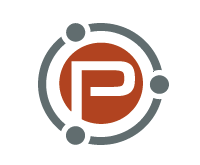ProBlogger: The Content Producer’s Copyright Checklist |  |
| The Content Producer’s Copyright Checklist Posted: 02 Aug 2010 06:54 AM PDT Copyright is the content producer’s constant companion. If you create content, you own it, and you want it to stay that way! At the same time, many bloggers link to, quote, and reference other peoples’ work. Understanding where the line of copyright falls is essential if you and your blog are to stay on the right side of the law. The BasicsWe all know that information — including images, video, music, or words — published online is not there for the taking. My bare-bones rulebook for using other people’s content looks like this:
You may also choose to identify the license under which the content was made available for reuse in your citation. When I include a quote in a post, I make sure I identify the individual I’m quoting, and I always include a link to the source document from which I’ve obtained the quote itself. These are the basic rules I follow when I’m using content created by others. But what about your own blog’s content? The Blogger’s Copyright ChecklistThis checklist should help you to ensure your blog is up to the basic copyright “safety standards”:
Other Copyright ConsiderationsDeciding on your approach to copyright early in the piece can help you keep a handle on infringements of your copyright — and avoid infringing the rights of others. It can also affect the value of your property. For example, you might decide you’ll only publish completely unique content over which you own all rights, in a bid to ensure that when you sell the site in future, you get the best possible price for the content itself. Prevention is better than cure. Sometimes protection is an insufficient deterrent, but in cases where your rights are infringed, you can always lodge a DMA takedown notice with the offending site’s host. On the other hand, you may decide that you want to release some of your assets under the Creative Commons license, which “provide[s] free licenses and other legal tools to mark creative work with the freedom the creator wants it to carry, so others can share, remix, use commercially, or any combination thereof”. Alternatively, you might use the Open Content license, which licenses content “in a manner that provides users with the right to make more kinds of uses than those normally permitted under the law – at no cost to the user.” Are you concerned about others infringing your copyrights? What steps have you taken to protect yourself? About the Author: Georgina has more than ten years' experience writing and editing for web, print and voice. She now blogs for WebWorkerDaily and SitePoint, and consults on content to a range of other clients. Post from: Blog Tips at ProBlogger. The Content Producer’s Copyright Checklist |
| You are subscribed to email updates from ProBlogger Blog Tips To stop receiving these emails, you may unsubscribe now. | Email delivery powered by Google |
| Google Inc., 20 West Kinzie, Chicago IL USA 60610 | |




Tidak ada komentar:
Posting Komentar